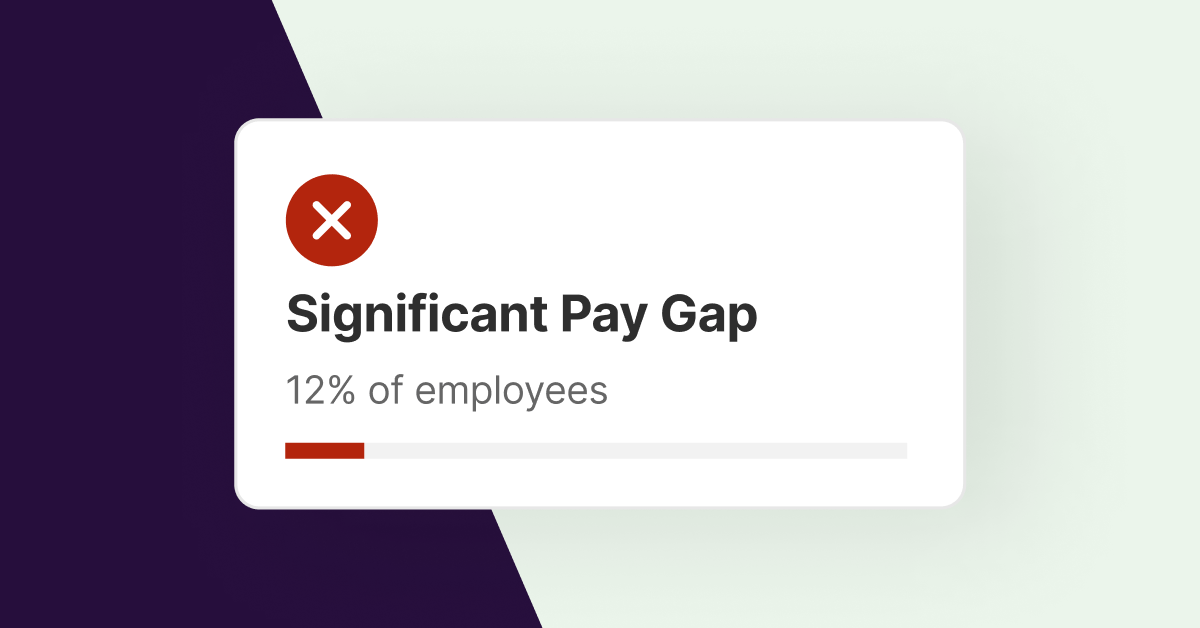With increasing attention on the gender pay gap and other disparities, there has been a growing push for companies to disclose more information about their compensation practices. Much progress has been made around achieving “equal pay for equal work”, with many of the largest U.S. corporations reporting on their progress towards pay equity. But many organizations are still hesitant when it comes to reporting data on unadjusted pay gaps.
However the unadjusted pay gap is a crucial yardstick for the overall state of equity. A company can reach “100% pay parity” between genders for jobs that perform similar work, but still have an all-up pay gap between what women in the company earn overall and what men earn overall. This is because pay gaps are also rooted in unbalanced representation in leadership positions and other higher-paying roles.
But is reporting on the unadjusted pay gap coming to the U.S. anytime soon? See our predictions below for what the trends signal.
First things first: What is the unadjusted pay gap?
The unadjusted pay gap can be a useful indicator of systemic inequality because it highlights the fact that pay equity alone cannot fully explain pay gaps — other factors such as underrepresentation in higher-paying leadership roles and promotion gaps also play a crucial role. Examining the unadjusted pay gap provides a more comprehensive view of pay gaps across the entire company. It can help spotlight the extent to which systemic opportunity inequities are driving pay gaps and where action needs to be taken to address these issues.
For example, recent research has revealed that women, on average, receive higher performance ratings than men but are awarded lower potential ratings. As a result, women are 13% less likely to get promoted than their male counterparts. This disparity in promotion rates contributes to women getting stuck in lower-level positions within organizations — resulting in lower average pay and perpetuating overall gender pay gaps. By honing in on potential biases embedded in the policies and practices around performance/potential ratings, a company in this situation can start addressing the root causes of their promotion gaps.
Is unadjusted pay gap reporting coming to the U.S.?
Based on the following, we predict that it is largely inevitable that we will see greater emphasis on the unadjusted gap in the U.S. in the coming years:
1. The EU Pay Transparency Directive will likely become the blueprint for what is to come around the world and it includes public median/mean pay gap disclosures. The EU Directive, which was just adopted in the EU, is the new global high-water mark on workplace equity. The EU’s 27 Member States will now require public disclosure of median and mean pay gaps, overall, by type of compensation, and by job category. While this clearly has implications for employers with employees in Europe, it also impacts U.S. employers because we have heard from federal and state legislators that they are highly focused on what is happening in Europe.
→ Get the Global Pay Reporting Cheat Sheet
2. We are seeing more companies voluntarily disclose unadjusted pay gaps. Arjuna Capital reported this year: “[M]ore and more companies are reporting both adjusted and unadjusted median global/U.S. racial and gender pay gap numbers… Over 40 companies in the U.S. are currently reporting or have committed to reporting median pay gaps in the next year…”
As highlighted in the Workplace Equity Communications Playbook, companies such as Visa and Microsoft are leading the way in voluntarily disclosing median pay gap data. Microsoft first shared their median pay gap data in 2022 and Visa committed to expanding their 2023 ESG Disclosure to include median pay gaps for 100% of its operations. Other major companies disclosing or agreeing to disclose their median pay gap include Adobe, American Express, BNY Mellon, Chipotle, Citi, Disney, The Home Depot, Mastercard, Pfizer, Starbucks, and Target, to name a few.
“This is an additional layer to the journey we have been on. We are one of the first, if not the first, to be this transparent on the topic of median pay, which is really about a representation gap.”
Lindsay-Rae McIntyre | Chief Diversity Officer, Microsoft
3. Median pay gap reporting is already starting to creep into legislation in the U.S. For example, for the first time this year, California is requiring that employers report median and mean pay gaps within EEO-1 categories, as part of the implementation of SB 1162. While the final law does not require public disclosure, initial versions of the law made some disclosure public. Illinois also has a law on the books requiring median pay gap reporting. Also, last legislative session, New York State considered a bill that would require disclosure of median pay. We anticipate that median pay gap reporting will increasingly show up in the next wave of pay equity laws.
Get ahead of your pay gap narrative
We believe it’s inevitable that pay gaps — both adjusted and unadjusted — are going public. That means that companies should begin taking action around their pay gap now, before someone else tells their pay gap story for them. Every company has room for improvement, and by openly discussing where you currently stand, your goals and targets, and what measures you are taking to achieve progress, you can build trust with employees, customers, and other stakeholders.
Want to find out where your organization’s unadjusted pay gaps stand today? Use our pay gap calculator below. Then you can move forward by creating an action plan to analyze, address, and communicate about your pay gaps — and Syndio’s team of experts can help every step of the way.
The information provided herein does not, and is not intended to, constitute legal advice. All information, content, and materials are provided for general informational purposes only. The links to third-party or government websites are offered for the convenience of the reader; Syndio is not responsible for the contents on linked pages.



